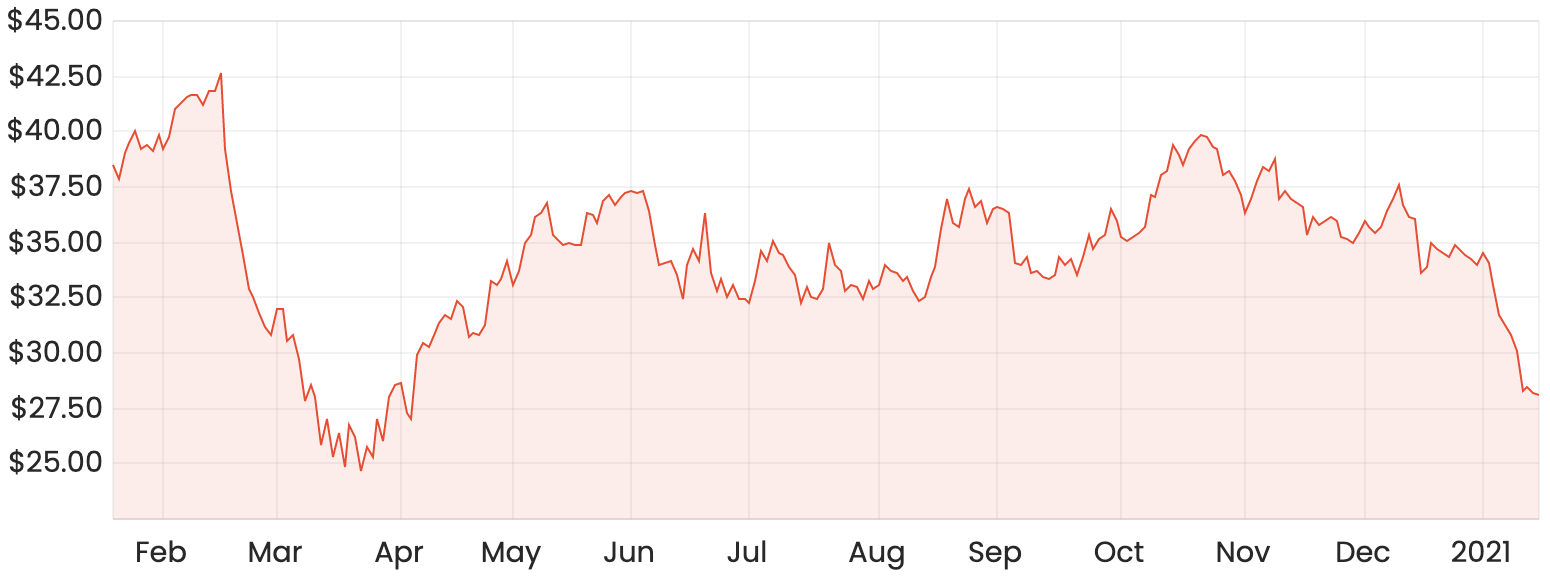Quite a lot has changed valuation-wise since I last wrote about the Altium Limited (ASX: ALU) share price back in October last year.
Since then, a slowdown in sales has resulted in the Altium share price taking a beating, tumbling 30% from $40 to its current level at around $28 per share.
ALU share price chart

It makes sense I suppose. Even at current levels after this recent sell-off, Altium shares trade at a trailing price-to-sales (P/S) ratio of 15x, and a price-to-earnings (P/E) ratio of 91x.
The company’s most recent HY21 update wasn’t terribly disappointing. But for a stock that’s priced for growth, it’s clear that some of the complications arising from COVID-19 are significant enough to weigh on the lofty valuation Altium carries.
Current headwinds
Most of the challenges that Altium is currently facing has arisen from the US and China.
In particular, Altium’s Chinese segment has experienced a 15% drop in first-half FY21 revenue due to problematic licence compliance activities at the low end of the market. The company has attributed this to uncertain economic conditions arising after the pandemic.
The piracy of Altium’s software in China has been an ongoing issue for years now. In 2017, management indicated that around 90% of its 100,000 users were using its software completely free of charge.
It’s not clear what that figure looks like today, but it seems that changes in licencing are an ongoing issue. The only positive I can take from this is that there would likely still be meaningful upside in revenue growth as the company continues to crack down on illegal users.
Looking ahead
Despite the current challenges, Altium still has some attractive features I’d typically look for in an investment idea.
Buying and learning how to use new printed circuit board (PCB) software is expensive and time-consuming. This results in extremely sticky customers that will face high switching costs if they choose to move to an alternative.
Like many other software companies, Altium is transitioning its customers from a perpetual licence model to a more flexible software-as-a-service (SaaS) model. From what I’ve seen from other companies that have made similar changes in the past, this often results in a temporary slowdown in sales as less revenue is recognised upfront, and it takes time to reap the rewards of recurring revenues.
Altium 365 is the latest weapon in the company’s arsenal – a cloud-based platform that allows multiple users to collaboratively work on a single project in real-time. With over 5,000 current users, the company is trying to tap into a large addressable market to drive further growth.
Management has set the ambitious target of US$500 million in revenue by 2025-2026, which will hopefully be driven by Altium 365 in addition to the SaaS pricing model.
Summary
I think the latest sell-off is more of a reflection of the short-term headwinds the company faces rather than more fundamental reasons. As such, I’d be willing to start building a position in Altium.
It is yet to be seen how the issue with piracy is resolved and how other COVID-19 related issues play out. For this reason, I’d personally start by buying a small allocation and gradually build a position as more information becomes available regarding these issues.
Altium is set to release its half-year FY21 results on 15 February. In the meantime, check out these 3 ASX tech shares for your watchlist.




